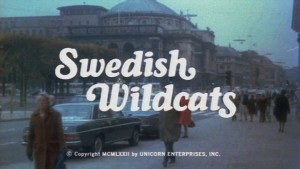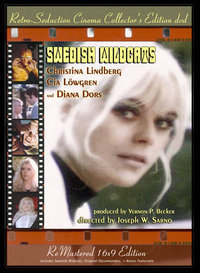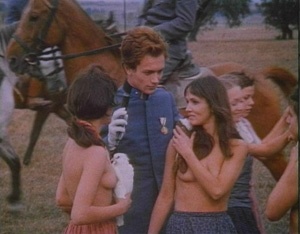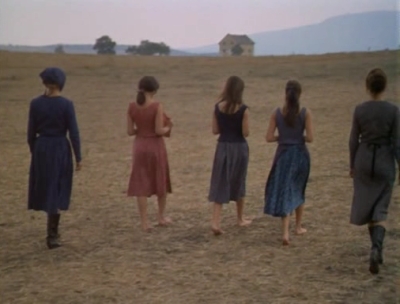From Monthly Film Bulletin, February 1975 (vol. 42, no. 493). -– J.R.

Swedish Wildcats
U.S.A./Sweden, 1974
Director: Joseph W. Sarno

Copenhagen. Margareta, a brothel madam who displays her prostitutes in elaborate cabaret revues at private parties, summons her two orphan nieces Susanna and Karen — both part of her entourage — to participate in a ‘slave auction’ staged for some local clients. Gerhard Jensen, chief of a ground crew handling air cargo, bids for Karen and then offers to pay extra to share a room with Susanna and his friend; Margareta agrees and watches the results through a two-way mirror: Gerhard complains to Karen, “I could get more excitement from a piece of raw liver”, and tries to make love to Susanna, then beats her when she refuses to kiss him on the mouth. In a park, Susanna meets Peter Borg, another member of Gerhard’s crew; it is love at first sight, and she presents herself as Natasha, a ballet dancer, while he claims to be a test pilot working on a secret project. Meanwhile, her sister Karen has also fallen in love with someone who doesn’t know her profession — Gabriel, an architect from a very respectable family. Read more
This was written in the summer of 2000 for a coffee-table book edited by Geoff Andrew that was published the following year, Film: The Critics’ Choice (New York: Billboard Books). — J.R.

A recent documentary about communist musicals called East Side Story (Dana Ranga, 1997) assumes that communist-bloc directors were just itching to make Hollywood extravaganzas and invariably wound up looking strained, square, and ill-equipped. But Red Psalm (1971), Miklós Jancsó’s dazzling, open-air revolutionary pageant, is a highly sensual communist musical that employs occasional nudity as lyrically as the singing, dancing, and nature. That is to say, within its own specially and exuberantly defined idioms, it swings as well as wails.

Set near the end of the 19th century, when a group of peasants have demanded basic rights from a landowner and soldiers arrive on horseback to quell the uprising, Red Psalm is composed of only 26 shots. (With a running time of 84 minutes, this adds up to an average of three minutes per shot. Jancsó’s earlier feature from 1969, Winter Sirocco, is said to consist of only 13 shots.) Each long take is an intricate choreography of panning camera, landscape, and clustered bodies that constantly traverse, join, and/or divide the separate groups. Read more




